The recent campylobacter scare stories have done nothing to dent the nation’s enthusiasm for poultry, but maintaining growth in such a high-penetration sector is harder than ever.
The Grocer quizzed four leading industry figures on the challenges - and opportunities - facing poultry
The panel
Peter Bradnock, CEO, British Poultry Council
Rob Mears, UK MD, Bernard Matthews
Simon Bloys, general manager UK & Ireland, Plusfood
William Buchanan, joint MD, Gressingham
What is the biggest challenge facing the sector?
RM: The increased cost of rearing and producing poultry - as ultimately, people don’t want to pay more for their food. So we have to work with our customers and other manufacturers to continue to educate consumers on the challenges of increased wheat and fuel prices. We also need to ensure products are produced as efficiently as possible, and work hard to find a price point that ensures everyone feels they are getting a fair deal.
WB: Managing our cost base is a huge challenge at the moment. In the current climate, it is important to do what we can to protect consumers from the cost increases we face. Some of this cost has had to be passed on, but the industry needs to be both rigorous and creative in how it manages this issue - rigorous in staying on top of costs and minimising these, and creative in looking at pack formats, new products and pack sizes to meet the needs of the consumer
PB: There are a number of big issues we’re dealing with at the moment - campylobacter and desinewed meat are two that have made headlines over the past couple of weeks. We always respond to issues as a responsible industry should - open engagement.
Are we taking the right approach on campylobacter?
PB: The UK is right up there among countries leading the way in campylobacter research. Our approach involves all parts of the production chain - industry, regulators and retailers - and we’ve made significant progress. We’ve learnt a lot from innovative ideas from other countries, but campylobacter is still yet to be fully understood, so research and practical trials often run side-by-side.
RM: The industry s working hard to reduce occurrences of campylobacter through improved bio-security, research, and investment into processes within slaughter plants. We don’t see this as a case of learning from other nations as the prevention of campylobacter is a global issue. The UK is working closely with other EU member states to share best practice .
What is the next step in improving welfare?
WB: We have made significant improvements in the duck sector by launching the Duck Assurance Scheme, which is accredited to UKAS and will soon be Red Tractor accredited. DAS has promoted lower stocking density, accessibility to open water and natural daylight for our ducks. The next step is to communicate these improvements to the consumer.
RM: The welfare of our birds is of utmost importance to us. Turkeys are inquisitive and therefore seek stimulation from their surroundings and each other. Our team continually assesses environmental enrichments, both existing and novel ideas, using a science-based approach to establish the beneficial effects on their natural behavioural patterns. More recently, we have been carrying out trials to assess birds being reared in sheds with natural light.
SB: We ensure compliance to internationally recognised animal welfare standards through internal and external assessment. We are continually reviewing and improving our systems.
PB: The next piece of legislation we’re implementing is the Protection of Animals at Time of Killing regulation. It’s an interesting one because a large part of the focus is about training and the standards therein. We’ve always felt that bird husbandry is a crucial but understated area of welfare.
What did you make of Morrisons’ recent move to ditch its non-GM feed stance for poultry?
RM: This is a significant move for UK poultry, but whether this will become industry standard will depend on the other major retailers. We plan to continue to use non-GM soya within our feed. We’ve taken this decision because of the issues we face regarding segregation of raw materials at the mill, birds on farm and meat through the factory - using both types of soya would add complexity and cost.
PB: Quite aside from any commercial agreements we are, as a sector, engaged in the responsible sourcing of feed. Whether that’s soya from South America or wheat from the UK, we’re part of the process that’s looking at all the sustainability aspects.
WB: This move is a significant one as it brings the poultry industry in line with other producers that use GM feed. We feed our birds according to individual customer requirements - some customers are still non-GM feed while others have moved to GM feed.
What is the biggest opportunity for poultry in 2012?
SB: Innovation. We pride ourselves on innovation, and we’re bringing some of the ideas and theatre that the chilled category is famous for into the frozen category. Our new product range, CHIXXS, for example, is inspired by taste trends from around the world and does not use any artificial colours or flavourings in the recipes. This is a must to deliver authentic flavour profiles, as we are conscious that more consumers than ever are looking at what is in the food they eat.
WB: In retail, the biggest opportunity is to capitalise on the growth in eating at home as an alternative to eating out. But the industry needs to work hard to capture this occasion as consumers will look for more interesting alternatives, treat ideas that will be an appropriate substitute for the meal out. We are seeing growing sales in our range of crispy aromatic duck and are now working on new fresh cook products.
PB: The biggest opportunity for the sector is food security. We make a massive - and sustainable - contribution to food for the UK, and we can play a vital role in providing food for the future of this country.
What about rare breeds and new, unusual cuts?
WB: There are many more types of poultry species that are interesting and tasty alternatives to the mainstream proteins but are not widely available yet. Compared to other poultry, even duck is still a niche meat. In the long term, we see scope for increasing interest in other speciality poultry, such as guinea fowl, poussin and quail, but success here is also about confidence and inspiration.
PB: Rare breeds aren’t really an option for our sector, given its scale. Poultry is about versatility and is already used for everything from a lunchtime sandwich to the Sunday lunch.
RM: To a degree, the poultry market is a victim of its own success as people see chicken as an everyday meat. This can make it harder to build a new rare-breed luxury market, especially given there is already segmentation of whole birds, including corn fed, free-range and organic. This doesn’t mean there aren’t any opportunities, though. For us, a key time for this type of activity is clearly Christmas, where people are willing to pay for rare-breed, new cuts and products that offer something a little bit special.
Which rival proteins should poultry watch out for?
SB: In the current economic climate, mince and other cheaper cuts of red meat are being promoted as alternatives to chicken. The increase in availability of frozen, easy cook, fish-based products is also providing increased competition to chicken in the healthy eating sector. Pork has received increased visibility and this is certainly providing stiff competition for traditional roast chicken on the Sunday lunch table. However, as a supplier of predominantly added-value products, we are not seeing any major pork innovations in our sector.
WB: From a health point of view, the poultry sector has most difficulty competing with fish. However, more from a taste perspective, the other protein that competes with duck is lamb. We should also be concerned about competition from pork - it is a much cheaper protein, and the UK market is a good market for pork producers from Denmark and Holland.
RM: No protein springs to mind. Poultry still makes up 33% of meat volume sold and - after bacon - turkey and chicken were the fastest-growing proteins last year. We do, however, need to remain competitive and innovative to ensure this trend stays in our favour. As for pork, we are not overly concerned. We know many consumers are transferring from red to white meat, understanding both the health and value-for-money benefits it offers. Although imports are keeping pork prices in the UK low, turkey and chicken still have the lowest everyday price per kg.
Is there still a business case for organic?
PB: Organic poultry still has a small and dedicated following. As an industry, we try to provide for all consumer preferences, although the call for niche products has dropped away considerably.
WB: There is definitely a business case for organic poultry. However, we are finding the demand reducing each year. This is a very price-sensitive category, and many consumers have traded out of organic poultry due to the recession.
SB: We do not see organic chicken and organic added-value chicken products becoming mainstream, and this is supported by the reduction in shelf space in the major retailers given to organic products and in foodservice, where organic products are rarely seen on menus
RM: While we have the ability to rear organic turkeys, there is no immediate commercial benefit for the business at the moment. We have seen a movement away from organic products in poultry, with even Christmas sales of organic birds falling by 10%.
What scope is there for brands to play a bigger role in mainstream poultry?
WB: The meat, fish and poultry aisle in supermarkets is probably one of the toughest areas in store for brands. But to capitalise on consumers’ appetites for new ideas and new recipes, we think our brand has an essential role to play in giving consumers the confidence and inspiration to try something new.
SB: It’s undoubtedly true that brands and sub-brands will lead innovation in the mainstream poultry market, in both retail and foodservice. It is the development of added-value products that will lead to an increased share for branded suppliers such as Plusfood. CHIXXS is an excellent example of how a brand can develop new and interesting flavours that go beyond the own-label offering.
RM: We strongly believe there is a role to play for poultry brands in the marketplace - after all, we are one of the largest poultry brands in the UK. We see two key growth areas for brands in the next five years. Firstly, in the ‘ready to cook’ category, where consumers and retailers are looking for fresh, convenient and innovative concepts. Secondly, we have to tap into consumer purchasing trends.
Any parts of the industry need a particular boost?
RM: Turkey. If we double the consumption of turkey meat we would still only bring it back to the levels of the mid-1990s, so it presents an enormous opportunity for retailers. It also benefits from being a protein that’s very much in line with consumer needs as it’s healthy, versatile and good value for money. To achieve this, we need to educate consumers and work with retailers to ensure there is plenty of in-store activation and reasons to buy at point of purchase.
SB: The most undervalued sector of the poultry market is the frozen sector. The media-led focus on diet and health in the early 2000s led to a distorted consumer view that fresh is better than frozen, and this was reflected in decreasing sales of frozen food. More recently however, marketing campaigns have started to prompt a reassessment of frozen food and the benefits that it can bring to not only the consumer but also to the retailer and the caterer in terms of consistent quality, availability and reduction of waste.
PB: The economic downturn saw a big move towards cooking from scratch and the increasing use of dark meat. This remains an area where we could instil greater consumer awareness and confidence.
What NPD has excited you recently and why?
SB: The introduction of poultry-based products into handheld snacking is an excellent example of how products and brands can be stretched into new and lucrative sectors. The move away from the more traditional meal occasions has to be seen as a long-term benefit for the retail poultry market.
PB: While not a product per se, the growth in recent years of convenience packaging has been really interesting to watch. We’re now at the stage where whole birds can be cooked at home without being taken out of the bag they were bought in.
WB: I really like what the Saucy Fish Company have done in the fish category. They have taken the fear away from cooking with fish and given customers other creative solutions.
RM: I was very interested in the Christmas Kit Waitrose produced with Heston Blumenthal, which was a different take on simply supplying a turkey at Christmas. For much of the turkey innovation we look to the US market, where there are some really interesting products and processes being developed.
How can the sector maintain long-term growth?
WB: Poultry is no different to any other category - the key to growth will be value and innovation. Delivering new cuts, interesting but easy scratch-cook formats as well as quality ready meals will unlock further growth in the future. We are fortunate that the UK consumer has relatively sophisticated tastes and genuine interest in more exotic flavours from Asian, Indian and Latin American cuisines.
PB: Slow and steady growth has been the bedrock of the sector, but as well as total consumption growth we’re seeing a bit of a switch from imported poultry to British-produced, as consumers become more aware of where their food comes from.
RM: While consumption of chicken has high penetration levels, there is a still a big opportunity in fresh turkey, so our immediate focus is to capitalise on this by educating consumers on the versatility, great taste and value for money turkey offers as a fresh meat. As an industry, there’s still lots we can do to highlight the healthy credentials of poultry in comparison to red meat.
SB: Continued growth will be driven by product innovation, product consistency and a reliable supply chain. We have tackled this within Plusfood by investing in a state-of-the-art processing facility in Europe, which gives us the ability to manufacture locally for our UK and European customers.
Topics
Meat & Fish Supplement 2012
- 1
- 2
- 3
- 4
- 5
 Currently reading
Currently readingThe big chicken questions answered (except the one about the road)
- 6
- 7
- 8
- 9











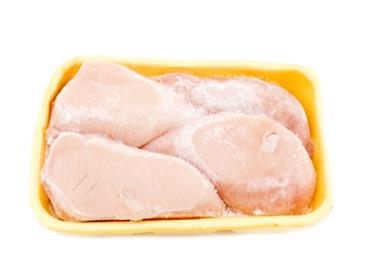

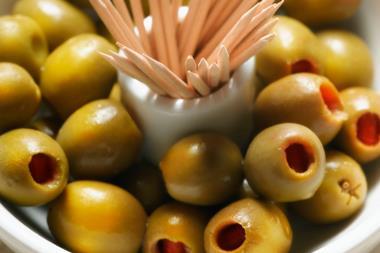
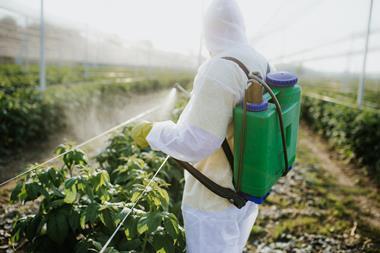
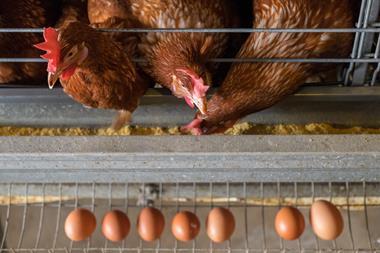
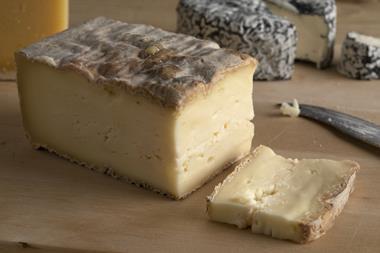

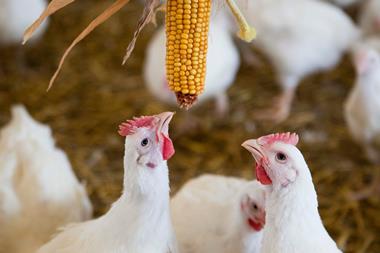
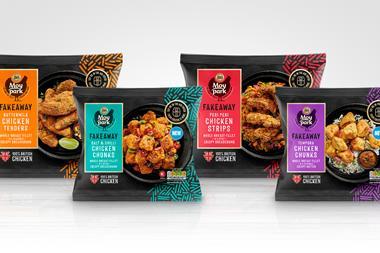


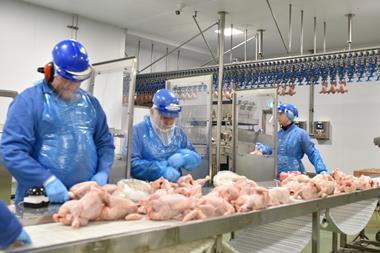
No comments yet